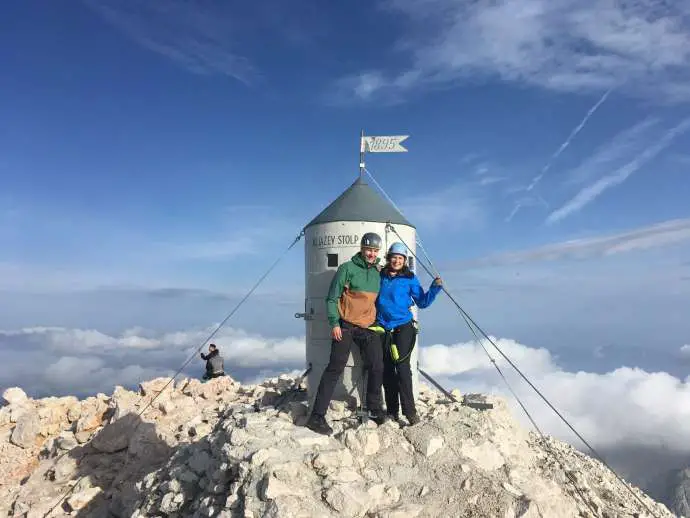With its 2864 metres of elevation, Triglav is the highest peak in Slovenia and the Julian Alps, and it’s said one only becomes a true Slovene after climbing it at least once. Triglav is also one of our national symbols and a central element on the coat of arms. Its name means “three-headed”, and could have come from its three-peak shape when seen from the south, or the Slavic god with the same name.
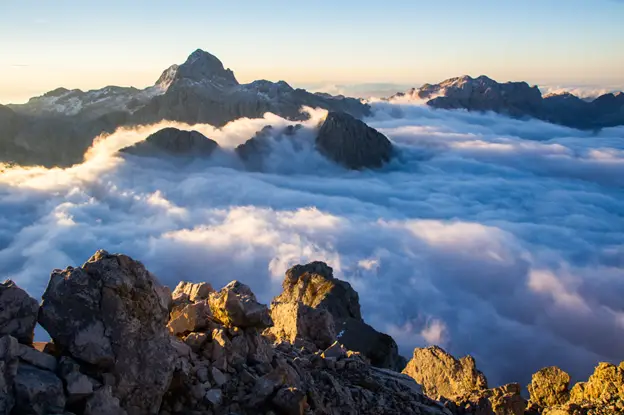
Triglav then and now
The first documented ascent to Triglav was accomplished in 1778. The “four brave men” from Bohinj made their way to its then still present glacier and traversed the sharp ridge to the peak. The ascent took three days, from the 24th to the 26th of August.
100 years later, when the people of Slovenia were struggling to establish their national identity inside the Austro-Hungarian empire, Slovene priest Jakob Aljaž bought a piece of land on the top of Triglav. There, he built a turret that characterizes the peak to this day. He was also the one to lay out plans for several hiking paths to its top. The dangerous and sharp ridge was flattened and made safer with a Via Ferrata, making it possible for more people to reach its peak.
Nowadays, Triglav is one of the most visited summits in Slovenia. Even though it still presents some risks and dangers, around 3000 hikers reach it daily at the height of the summer season. Apart from the symbolic value, the peak is also attractive because of its spectacular views from the centre of the Julian Alps. The prominent peak can be seen from most of Slovenia, always inviting those who see it to climb it.
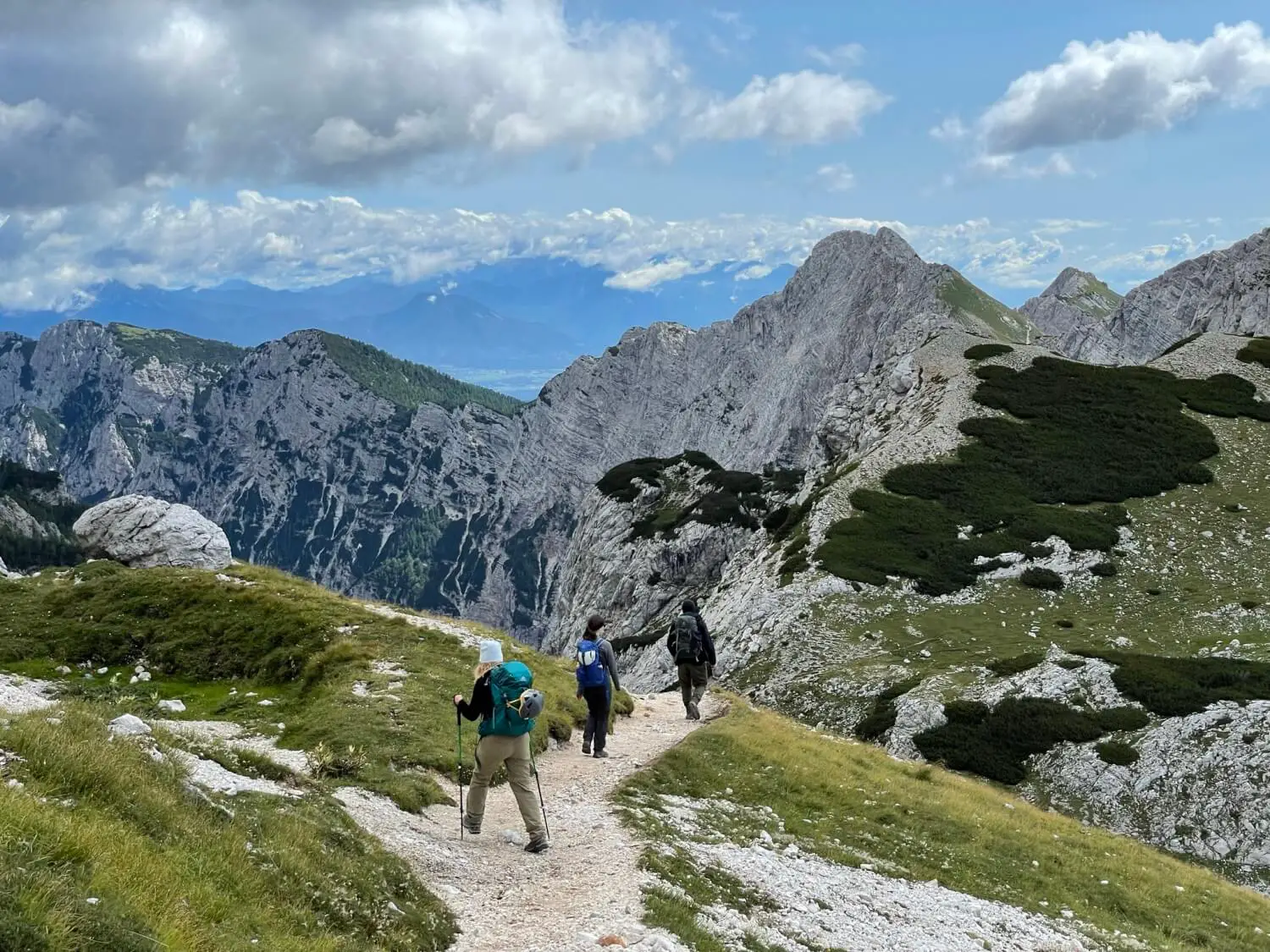
How to climb Mt. Triglav
Even though many Slovenians do it, climbing Triglav is not that simple of an undertaking. Most of the trails leading to the peak take an approximate time of 6 hours of walking in one direction. That’s why most people choose to do it in two days, spending a night in one of the mountain huts close to its peak.
The most popular is the Triglav Hut on Kredarica, which at 2515 metres of elevation is the highest situated hut in Slovenia. The second choice for most hikers is the Planika Hut, located on the southern side of the mountain. Whichever one you choose, spending extra time in the moon-like landscape of the barren and rocky high-altitude karst of the Slovenian mountains is a must-have experience.
The best time to climb Triglav is August and September since all of the snow is gone. On sunny days of August, it can get pretty crowded, that’s why more and more people climb it in September or even June and July. Of course, early ascenders must research if there is still some snow on the route. Winters ascents are also possible but should only be tried by the most experienced mountaineers. Sometimes it is also possible to ski from the top, which is one of the hardest possible skiing in Slovenia one could try. Otherwise, a ski tour to the Kredarica hut is a must-do for every ski tourer in Slovenia.
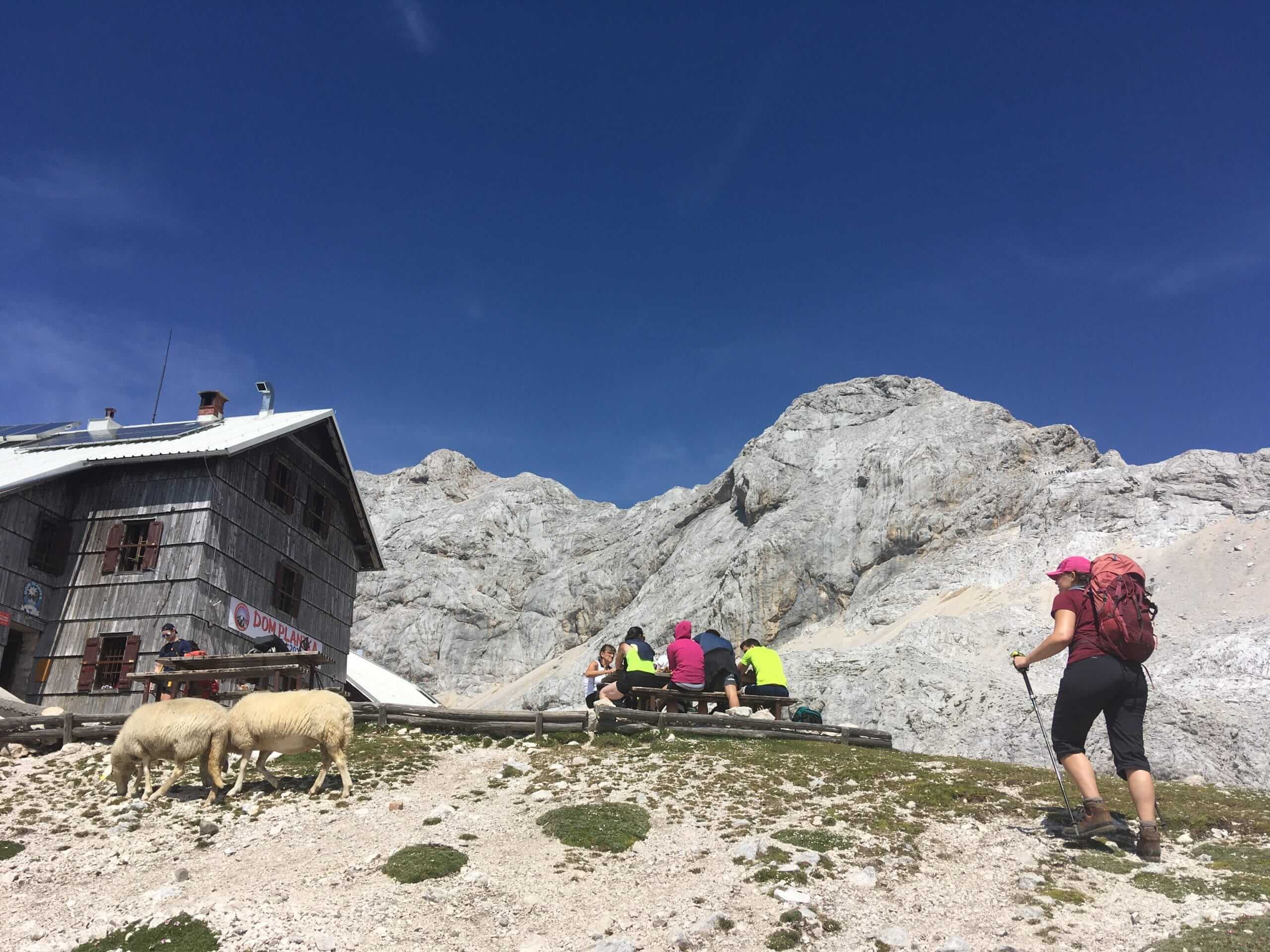
All the paths lead to Triglav
There are many different trails from all sides that lead to the top. The least difficult one leads from the Krma Valley, one of the three Triglav glacial valleys. It is one most who want to climb Triglav in one day use since it’s also the shortest. Those who go on multiple-day hikes start from Pokljuka. The trail is a little longer but very scenic, taking advantage of your extra days in the mountains.
The steepest but also the most fun climbs start in the Vrata Valley. They are the most difficult since they have many Via Ferrata elements, which require some climbing skills. They lead you next to the Triglav North Face, the cradle of Slovenian alpinism. One of the bigger faces in the Alps is more than a kilometre high and around 4 km long. It has more than a hundred different climbing routes of different grades that attract a large number of alpinists each year.
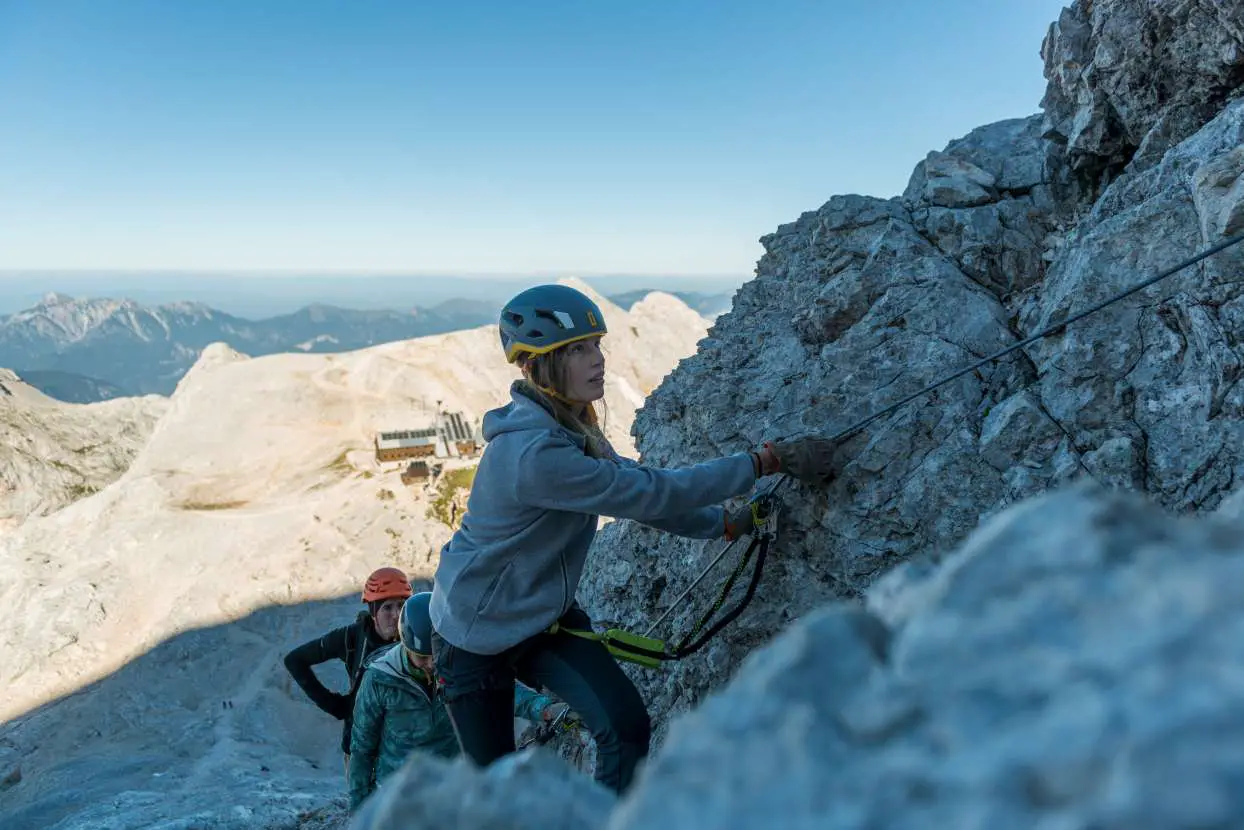
A guide makes your experience safer and more enjoyable
Even though the trails leading to the top are of different overall difficulty, they all have a technical upper part. The last hour of every ascent is a Via Ferrata requiring proper equipment and enough experience in mountain climbing. Knowing something about the local weather is also necessary since you never want to be caught in a storm in that kind of terrain.
If you don’t have all of that experience and knowledge, choosing to climb with a guide is the most sensible option. They are certified professionals who spend their lives training how to make your hikes as safe and enjoyable as possible. They know the most optimal routes and how to make your ascents easier. Local guides are also fluent in English and can share some amazing insights about the mountains and the area. Besides all that, they can also help you book your beds in the huts that are very crowded in the high season.
To find the best way for you to climb Mount Triglav, check out this selection of guided Triglav tours.

